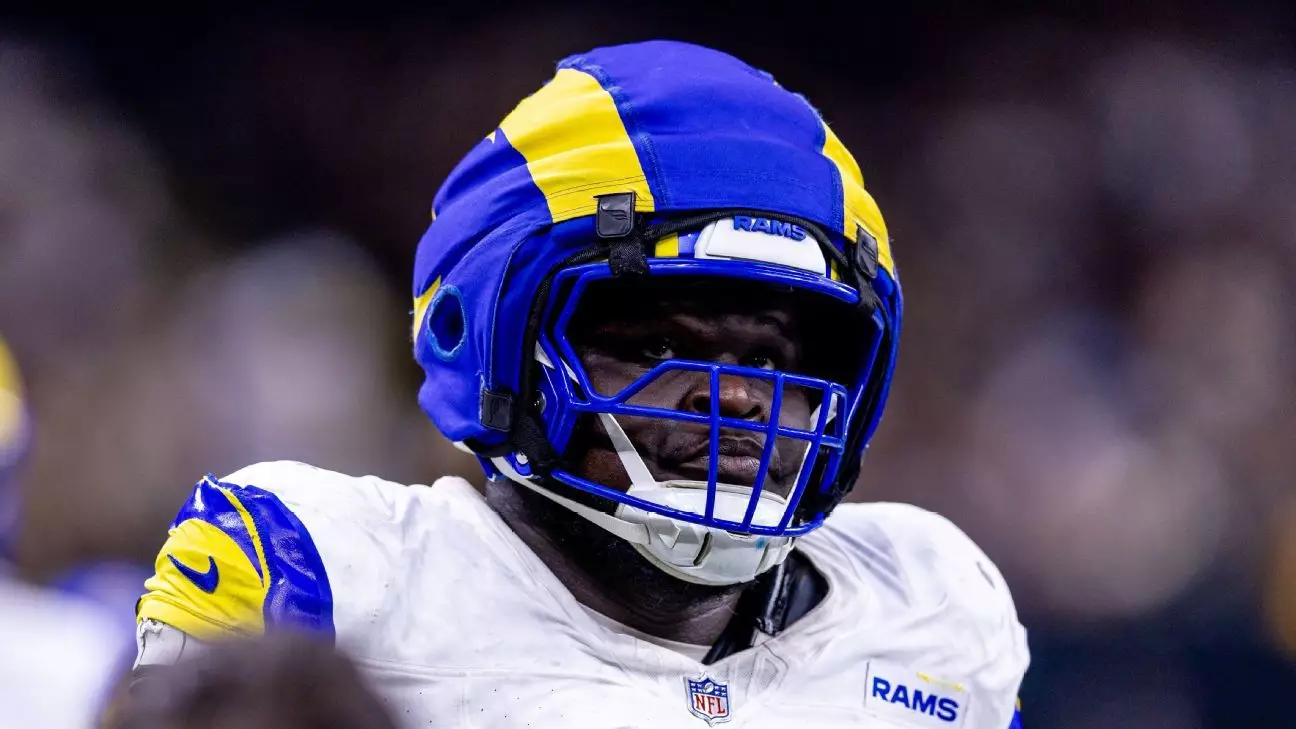The National Football League (NFL) has reached a significant milestone this season by documenting the lowest number of concussions since the league began recording this critical data in 2015. As announced recently, a total of 182 concussions were reported during games and practices across both the preseason and regular season, representing a noteworthy 17% decline from the previous year’s figures. This reduction from a previous low of 187 in 2022 (excluding the virus-affected 2020 season) speaks volumes about the ongoing commitment to improving player safety. However, while these statistics are encouraging, they also underscore the continuous need for vigilance and innovation in safeguarding the health of NFL athletes.
The five-year average for reported concussions prior to this season stands at approximately 211.4 per season, excluding the anomalous 2020 data due to the pandemic. Therefore, the current figure not only marks a significant drop but also suggests that the measures undertaken to mitigate head injuries may be taking effect. Dr. Allen Sills, the NFL’s chief medical officer, expressed satisfaction with the declining statistics but emphasized that the journey towards optimal safety standards is far from complete. The NFL’s leadership, including Dr. Sills and Jeff Miller, its executive vice president for player health and safety, highlighted several factors that may have contributed to this positive trend.
One of the drivers in reducing concussion rates appears to be the enhanced quality of helmets, which warrants attention. A remarkable 35% of players upgraded their helmets based on annual rankings established by the NFL and the NFL Players Association. Such an increase in helmet quality is significant when compared to previous years, where the upgrade rates hovered between 14% and 17%. The introduction and expanding mandate of Guardian Caps—a protective covering worn over helmets during practice—has also played a vital role in attenuating head injuries.
The effectiveness of the Guardian Caps is evidenced not only in practice scenarios but also during specific plays. Notably, improvements were recorded in the redesigned kickoff plays, with a remarkable 43% reduction in concussion rates, even though the total number of concussions on kickoffs remained unchanged due to an increase in returns.
The strategic implementation of protective gear like the Guardian Caps has now become a standard in training sessions, preparing players for the physical demands of the game. While the NFL reports that about 20 players opted to wear Guardian Caps during regular-season games, the sample size remains too small to draw definitive conclusions on the long-term benefits. Nonetheless, the data correlating helmet impact with high-speed collisions indicate a broader systemic awareness regarding player safety.
A new metric introduced by the NFL, focusing on helmet impacts from plays where at least one player exceeds 15 miles per hour, reveals that these conditions result in a concussion risk 26 times greater than standard plays. This statistic starkly illustrates the necessity for ongoing evaluations and enhancements to the game’s rules and equipment.
While the league’s proactive steps are commendable, challenges persist. No penalties were issued for on-field infractions of newly introduced rules, such as the prohibition of hip-drop tackles, though approximately 30 players did receive fines or warnings post-game. Such aftermath enforcement is critical to instilling a culture of accountability and respect for player safety.
Ultimately, while the current data presents an optimistic portrait of concussion management within the NFL, it is essential to remain conscious of the non-linear nature of safety in contact sports. As the league progresses, an unwavering commitment to research, innovation, and player education will be vital. Continuous monitoring, coupled with adaptable strategies, will be fundamental in fostering a safer athletic environment for all players as the NFL strives to navigate the complexities of player health in a high-impact sport.


Leave a Reply